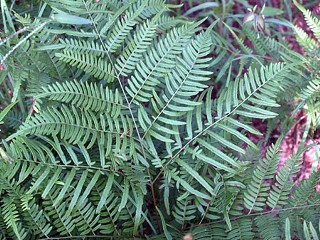Day Trips
Gus Engeling Wildlife Management Area has so many animals that they give you a scorecard at the front gate to keep track
By Gerald E. McLeod, Fri., June 15, 2007
Gus Engeling Wildlife Management Area, just north of Palestine, has so many animals that they give you a scorecard at the front gate so that you can keep track.
Actually, even though the 11,000-acre wilderness area does have healthy populations of deer, beavers, rabbits, squirrels, birds, alligators, and other critters, they are all pretty elusive in the dense forest. Visitors are asked to keep track of wildlife because this is a research laboratory as well as a conservation area. The data cards aren't really scorecards but are part of an ongoing census of the animals in the area.
"We have a long list of unique plants and animals," says Wes Littrell, assistant area manager for the Texas Parks & Wildlife Department preserve. "Plants alone, we have close to 1,000 species." At the end of April, Littrell hosted a researcher from Delaware studying the preserve's unusual pitcher plants.
Most of the land was purchased between 1950 and 1960 along Catfish Creek, making Gus Engeling WMA one of the oldest wilderness preserves in the public's inventory. Its age also makes it one of the most valuable, because large portions of the property have been undisturbed by agriculture. The unit was named for Gus A. Engeling, the first biologist assigned to the area. Engeling was killed by a poacher a little more than a week before Christmas in 1951.
Although the preserve is on the edge of the East Texas Piney Woods, the land in Gus Engeling WMA features Post Oak Savannah. The eco-region stretches from the Red River to Guadalupe County north of San Antonio.
At one time, the upper elevations of the region were covered with tall grasses and stands of hardwood trees. The bottom land along the creeks and rivers was populated mostly by the hickories and oaks that cavity-dwelling wildlife prefer. Old-growth forest survives along Catfish Creek, which was designated a National Natural Landmark, one of only 19 selected in the state by the National Park Service.
Gus Engeling WMA is primarily an area for training biologists and is used extensively by birders and hunters. But the preserve should not be overlooked by Texans who appreciate the beauty of the natural landscape. Very few places open to the public offer this kind of look at our ecological history.
A 7-mile, all-weather road runs the length of the preserve. From the comfort of your car you can read signs that explain the landscape. It is a beautiful drive with ferns creeping into the road, fields of wildflowers, and, if you take your time, you might see some of the wildlife.
"Right now is a perfect time to visit," Littrell says. "I won't lie to you: The bugs are out, but the wildflowers are awesome." The area has already received 35 of its 43 inches of annual average rainfall.
One negative of all the rain has been that the beaver pond with its lily pads was nearly drained when the dam was washed out. "The beavers have been working on replacing the dam," Littrell says.
The preserve has two hiking trails, one around the beaver pond and the Dogwood Nature Trail, which leads into the dense woods away from the lowland bogs. The beaver pond also has a viewing blind. North of the preserve are two ponds, called Lake No. 1 and Lake No. 2, which are popular with fishermen. "A 7-foot alligator has been spotted at Lake Number 1," Littrell says.
Both lakes have screened shelters but are for day use only. Campers can use the three screened shelters on the creek on a first-come, first-served basis. All visitors to the wildlife management area must sign in at the entrance. The driving tour and light use of the trails are free. Hunters, fishermen, campers, and serious birders need to purchase a $12 annual TPWD Limited Public Use Permit. "It helps pay the upkeep of the place," Littrell says.
Gus Engeling Wildlife Management Area is about 21 miles north of Palestine off U.S. 287. There are no facilities at the preserve, so bring plenty of water, bug spray, and sunscreen. For information, call 903/928-2251 or go to www.tpwd.state.tx.us.
833rd in a series. Day Trips, Vol. 2, a book of "Day Trips" 101-200, is available for $8.95, plus $3.05 for shipping, handling, and tax. Mail to: Day Trips, PO Box 33284, South Austin, TX 78704.









